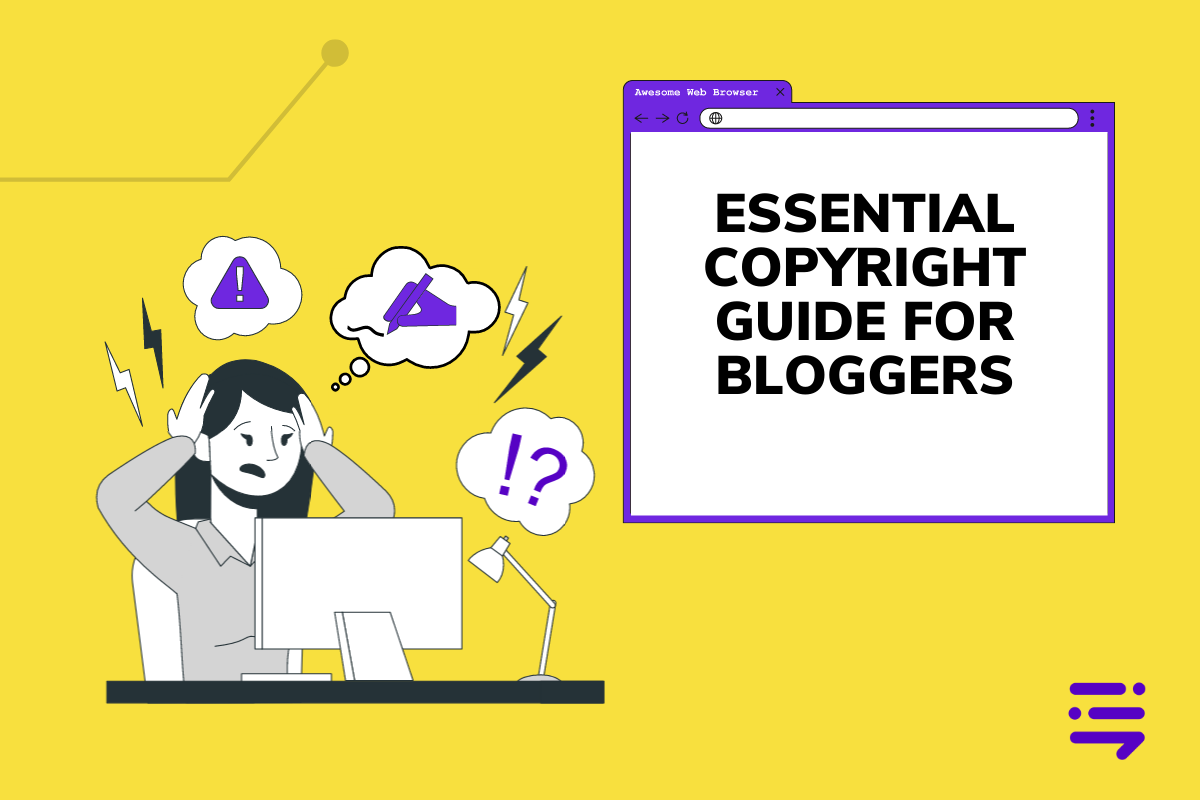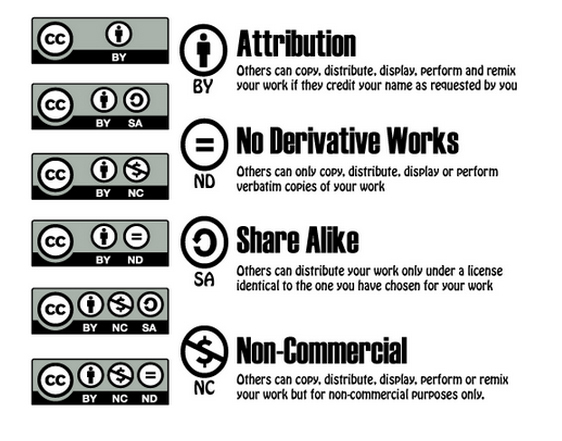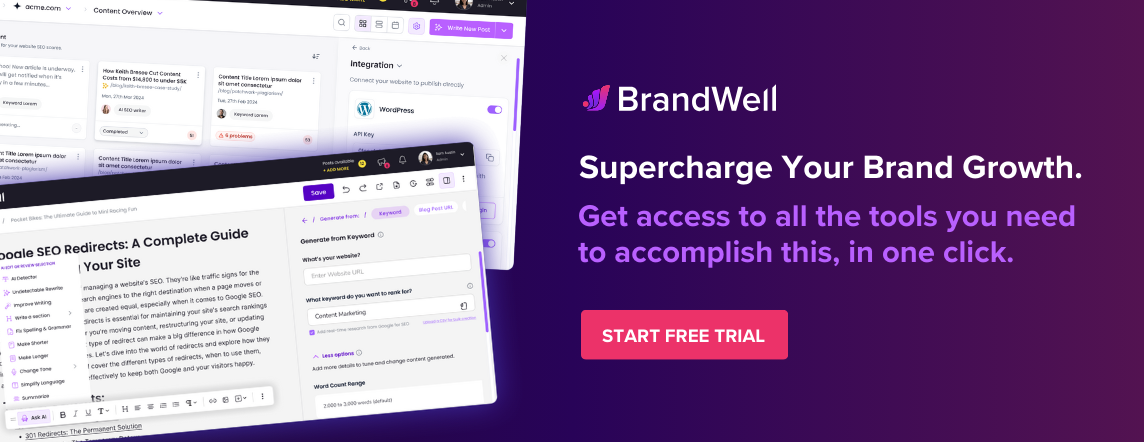Discover top guides, trends, tips and expertise from AIO Writers

People often think that the content they find online — blogs, art, photos, images, copy — is up for grabs. But the truth is, any content you create is protected by copyright the moment it is written, and other people cannot simply take it.
In this blog post, we’ll examine the basics of copyright protection for bloggers, including who owns the rights to your published work, how to properly attribute sources, and what to do if someone steals your content.
Don’t let someone else profit from your hard work. Let’s dive into how to protect your intellectual property in this copyright guide for bloggers.
Table of Contents
Copyright Law Basics
Copyright law is an important part of blogging. Copyright law allows you to protect your original work and grants you the authority to use other people’s material in specific situations.
To ensure your blog is compliant with copyright law, it’s important to familiarize yourself with the key points. Here is a general copyright guide for bloggers and anyone who may publish work online.
- First, copyright protection is automatic whenever something is created. As soon as you write literature or record music, it automatically becomes copyrighted work – with no registration required. Any unauthorized use of copyrighted work could be considered copyright infringement and may lead to legal action.
- Second, registering your work with the U.S. Copyright Office gives you additional protections if someone infringes on your rights as a copyright owner. Registering makes it simpler to identify who owns the copyrighted material and alerts potential infringers that their actions may constitute a breach of a copyright holder’s rights.
- Thirdly, adding a visible copyright notice can help protect against accidental infringement and make sure people know who owns the material before they use it. This should include not only text indicating copyright ownership but also contact information so potential users can reach out for permission if needed.
All bloggers should be aware of copyright law fundamentals to safeguard their original work as well as prevent them from using stolen content.

Register Your Blog Content
Registering your blog content with the U.S. Copyright Office is an important step in protecting your work. By registering your blog, you are establishing a public record of copyright ownership for any content that you create and post. This will help to ensure that others cannot claim or use it without permission from you as the original author.
The process for registering is not complicated. Just fill out an application form, pay the fee, and provide evidence of authorship (e.g., the original material). Once registered, your work will be protected by law for up to 70 years after death or 95 years after publication, depending on which term expires.
Registering your blog content with the U.S. Copyright Office offers numerous advantages such as awarding you with statutory damages should someone infringe upon your rights and covering attorney’s fees when enforcing your rights comes down to litigation.
When registering, be sure to submit accurate information as mistakes can invalidate copyrights entirely. It is also important to not only register new works but also update existing registrations periodically. This helps keep track of changes which can affect how much protection is available in case something goes wrong later.
Registering your blog content with the U.S. Copyright Office is a crucial step in protecting yourself and ensuring that no one else can use your work without permission. Some people and companies, however, choose to allow others to use their creative works for free through licensed material under Creative Commons or Public Domain.
Word to the wise: Just because a photo is uploaded to Wikimedia Commons under a Creative Commons License DOES NOT mean it is actually a creative commons photo. Just learned a very hard and expensive lesson on copyright law… be careful, bloggers! 😫
— In Defense of Plants (@indfnsofplnts) February 26, 2021
Use Creative Commons Licenses
Creative Commons licenses allow content creators to legitimately share their creations with others. They are available in several different forms depending on what level of protection you want for your work. Some versions allow users more freedom when using someone else’s material without requiring permission.
A Creative Commons license offers the copyright owner the option of allowing others to utilize their work under certain conditions, such as:
- Attribution (giving credit where it’s due).
- Non-commercial usage (not using the material for profit).
- No derivatives (not changing or remixing the original).

Image source: Cal State Fullerton
When registering your blog content with a Creative Commons license, there are several things you should consider.
- What kind of rights do you want to give away?
- Are you comfortable allowing people to make derivative works based on your material?
- Do you want users to be able to commercially exploit your work?
Once these questions have been answered, selecting a suitable license becomes much easier.
In addition to granting permission for people to use your work legally, Creative Commons licenses also help protect against plagiarism and infringement by clearly defining who owns the copyright and what rights they have over their material. This makes it easier for bloggers to understand exactly what is allowed when it comes to sharing information online.
Make sure blog posts are accompanied by a valid copyright notice, allowing readers to identify the rightful owner and ask permission if needed. Most blogging platforms allow content creators to add custom notices when publishing posts.
Alternatively, many sites offer plug-ins or widgets specifically designed for adding copyright notices without any technical knowledge required.
Remember: Just because something appears online doesn’t mean it’s free for all. Even if someone else has used a blogger’s copyrighted material without permission, this doesn’t give anyone the right to do the same.
Always check licensing terms before reusing another person’s content to stay within legal boundaries and avoid infringing upon another creator’s intellectual property rights.
Protect Your Work with a Copyright Notice
A copyright notice is a statement that appears on any copyrighted material, such as blog posts or other content, that identifies who owns the rights to the work. It also details legal rights regarding the use of the material.
The exact wording used for this type of notice may vary slightly from country to country but generally should include: “Copyright © [Year] [Name]. All Rights Reserved.”
Adding a visible copyright notice helps ensure people respect your ownership rights and don’t misuse your original material as many countries have strict penalties associated with infringement cases. If you are not sure what type of license you need, consult a specialist in intellectual property law.
When Can You Use Someone Else’s Content?
Using someone else’s content on your blog is not as simple as clicking copy-paste. Knowing when you can legally use another person’s work is important to ensure that you are not breaking any laws regarding copyrighted work.
First, it’s important to understand what constitutes copyrighted material. Copyright law protects original works of authorship such as literary works, music, photographs, artwork, and software code.
Generally speaking, if a work has been created and published in any form or medium — including online — it’s protected by copyright laws unless otherwise noted. This means that simply citing the source isn’t enough. Permission must be obtained from the owner before reproducing their work on your blog.
Obtaining authorization can be done via a contract between the author or publisher of the material and yourself. There are several types of licenses available, depending on how much control the author wants over their content and how much access they are willing to share.
In addition to getting proper authorization, it’s also important that you properly attribute all sources used in your blog posts and articles so readers know where the information came from originally. Crediting sources helps protect against copyright infringements while also helping build trust with readers who may be looking for accurate citations for further research purposes.
If you post someone else’s content, be sure to link back to the original source. Links are an important form of social currency that provides value to content creators by boosting their search engine rankings and exposing them to new audiences.
Creators who are in it for the exposure will probably be happy you mentioned them as long as you give them credit. Giving proper attribution is probably the only legal thing you need to do to stay in the clear.
Adding a copyright notice at the bottom of each blog post also reminds readers to acquire images legally either through direct purchase or a royalty-free image website like Shutterstock or Pixabay.
A4.
— Egline Samoei (@Egline_Samoei) September 22, 2021
—Take your own photos
— Check license of a material before use
—Instead of posting copyrighted content directly on your social media page, post a link to the original source containing the content.
—Use royalty free images/music and give attributions always#AfricaTweetChat
Copyright becomes an even more convoluted issue when it comes to AI-generated content. If you’re publishing blog posts that were written by BrandWell or ChatGPT, who “owns” that piece of work?
Get the answers from this comprehensive guide on AI and copyright.
FAQs – Copyright Guide for Bloggers
Do bloggers need copyright?
Yes, bloggers do need copyright. Copyright protects their work from being used without permission and provides them with legal recourse if someone does use it without authorization. It also gives the blogger exclusive rights to reproduce, distribute or display their work as they see fit.
Without copyright protection, anyone could take a blog post and use it for any purpose they wish – even claiming ownership of the content in some cases. Obtaining copyright is a crucial step for bloggers to secure their effort from any unauthorized or improper use by other individuals.
How do you write copyright on Blogger?
When writing copyright on Blogger, it is important to include a clear statement of ownership. This can be done by adding this phrase at the bottom of each page:
“Copyright [Year] [Name or Company], All Rights Reserved. Any unauthorized duplication or use of this material is strictly prohibited.”
It should also be included in any footer text and/or within the terms and conditions of your website.
How do I protect my blog from copyright infringement?
To protect your blog from copyright infringement, make sure all the material you post is original or appropriately credited and approved. This includes any text, image, video, music, or artwork.
If you fail to obtain permission or provide proper attribution for someone else’s work, this can be viewed as a breach of their copyright and could result in legal repercussions. Always ensure that the content posted on your blog is legally obtained before publishing it online.
Conclusion
This blogger’s guide to copyright should be able to help you navigate the legal complexities associated with online publishing, allowing you to create original content without fear of infringement or violation.
Taking proactive steps like registering your blog’s content and utilizing Creative Commons licenses can offer assurance that your efforts are protected by law despite the risks included with blogging.

UNLOCK YOUR POTENTIAL
Long Headline that highlights Value Proposition of Lead Magnet
Grab a front row seat to our video masterclasses, interviews, case studies, tutorials, and guides.



